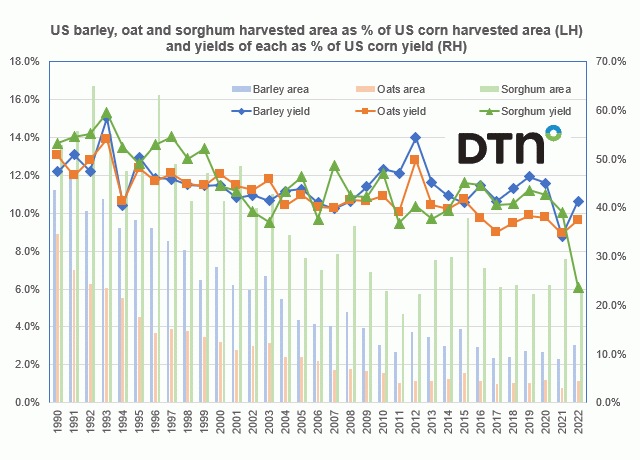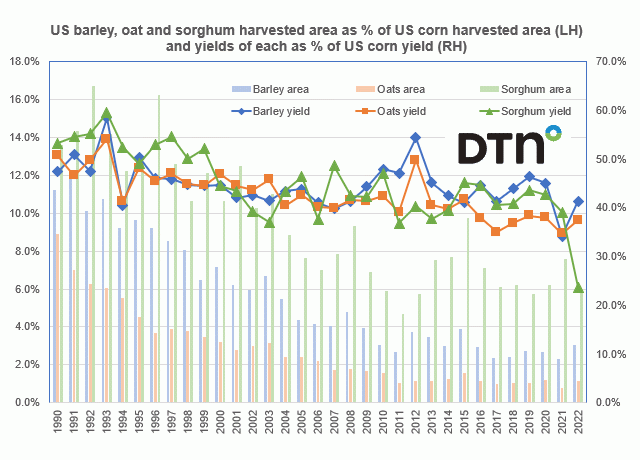Fundamentally Speaking
Corn Increases Acreage vs. Other Feed Grains
In addition to corn, USDA also keeps tabs on three other feed grains including barley, oats and sorghum with data on planted and harvested acreage, yields and weekly crop conditions among others.
The fact is however that corn acreage and production continue to increase at the expense of the other three.
Back in 1990, corn harvested area was 74.8% of the total four feed grains, last year it was about 91%, while in 1990 corn output accounted for 85.4% of total U.S. feed grain production.
P[L1] D[0x0] M[300x250] OOP[F] ADUNIT[] T[]
In 2022 that had increased to over 97%.
The higher profitability of corn may have incentivized farmers to shift their acreage towards corn production.
There are also yield considerations as corn yields have held up far better than barley, oat or sorghum yields, particularly in recent growing seasons where growing conditions have been rather stressful as sorghum yields last year were 41.1 bushels per acre (bpa) was actually the worst since 1960.
The graphic shows the U.S. barley, oat and sorghum harvested area as a percent of the U.S. corn harvested area on the left-hand axis and the yields of each of the other feed grains as a percent of the of the U.S. corn yield on the right-hand axis.
Barley and sorghum area 30 years ago averaged around 10-12% and 14-16% of the U.S. harvested corn area respectively, but now average only 3% for barley and 6% for sorghum with oats going from 7% to just over 1% last year.
As for yields, from 1990-1994 barley and oat yields averaged about 49% of corn and sorghum yields were 55% of the 1990-1994 average corn yield, but over the past five years that has dropped to 42% for barley, 37% for oats and 38% for sorghum.
(c) Copyright 2023 DTN, LLC. All rights reserved.





Comments
To comment, please Log In or Join our Community .